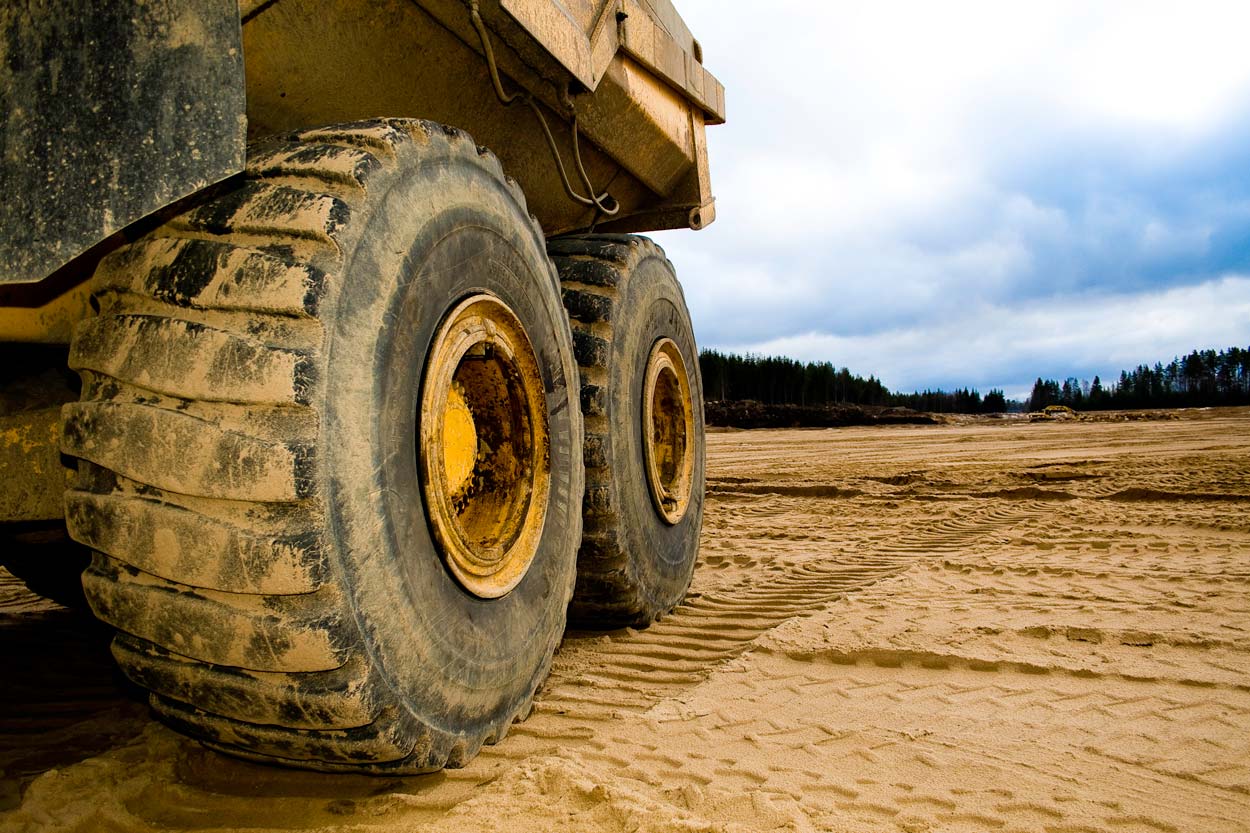Truck operators and manufacturers are acutely concerned about corrosion of vehicle parts.
“It’s huge,” said Todd Cotier, maintenance manager at Hartt Transportation in Bangor, Maine, during a technical session at last fall’s meeting of the Technology & Maintenance Council, the nuts-and-bolts arm of the American Trucking Associations. ”I don’t remember this happening with rock salt that they used to use.”
He and many other fleet operators have complained about calcium- and magnesium chloride salts that road departments began using more than 25 years ago. They work better at keeping pavement clear than rock salt, which is sodium chloride, but do more damage to vehicles.
One place they can damage is the wheel, thus the session on “Corrosion at Wheel-to-Hub Mating Surfaces.” Cotier and four other presenters emphasized the right way of dealing with rust. One is cleaning, which at Hartt is a multi-step procedure that begins with a non-destructive method of removing wheels.
The typical way is to hammer the wheel away from the brake drum, to which it’s seized by rust. But that can damage a steel wheel and can easily ruin a comparatively soft aluminum wheel, Cotier said. Instead, his shop crews employ a Kiene Wheel Whiz, a contraption that’s chained to a wheel through its hand holes and evenly applies pulling force. The force comes from a 1-inch-drive air gun that, except for its weight, is easier on the mechanic than swinging a heavy hammer. With the wheel pulled free, the clean-up work begins.
An aluminum wheel’s inner hub bore and mating surfaces pick up rust from the steel hub and iron brake drum, and the mechanic removes it with a soft abrasive attachment on a grinder and a 6-inch sander with 100-grit paper. Next, the hub: He wields a needle scaling tool and right-angle die grinder with a fine abrasive to clean the hub’s mounting-pilot pad and the rest of its vertical surface. That done, the drum can come off with the help of a lifting tool, and its mating surfaces are cleaned up.
Fastener treatment
Fasteners require special treatment. Bolts are first tested with a socket-like tool that slides on. If it slides more than four threads, the bolt is too worn and is removed and replaced with a new one. If it passes the test, its threads are wire-brushed clean and get one drop of 30-weight oil to inhibit new rust and allow nuts to spin on freely. The small bit of oil is distributed as the stud nut is spun onto the bolt.
The two-piece flange nuts are checked for integrity and each gets two drops of 30-weight oil between the nut itself and the attached washer, which should easily turn against the nut to ensure even clamping force during tightening. Clamping force, sometimes called a “clutch effect,” is what mates the wheel to the hub and drum, and supports the load (bolts do not shoulder the weight). Hartt mechanics use socket-like wheel guides to mount the wheels and, after removing the guides, torque the nuts at 500 foot-pounds.
Most of Hartt’s truck wheels are wide-base single aluminum. For steel wheels, Cotier said the procedures for cleaning them are the same, except that a thin coat of paint from aerosol cans is applied to a wheel’s mating surfaces to inhibit seizing. Plastic or nylon discs placed between mating surfaces can also discourage rust.
To combat corrosion, MBH has switched from painted steel wheels (1) to unpolished aluminum (2) to treated aluminum wheels. Products include Alcoa’s Dura-Bright (3) and Accuride’s Accu-Shield and Accu-Armor (4).
To combat corrosion, MBH has switched from painted steel wheels (1) to unpolished aluminum (2) to treated aluminum wheels. Products include Alcoa’s Dura-Bright (3) and Accuride’s Accu-Shield and Accu-Armor (4).
Chloride hauler’s advice
All the cleaning is a dirty job that simply must be done to preserve the components and keep them safely on trucks and trailers. This is especially true at MBH Trucking in Weberville, Michigan. Its vehicles haul chloride solutions to road departments and spread the stuff on dirt roads and parking lots to control dust. Thus they are more directly exposed to the corrosive materials. Salts of various types are produced by a sister company, Chloride Solutions.
Jim Smith, who works in sales and field service at the companies, said the chloride application trucks are power-washed daily by drivers, who use soap and water. A new maintenance building will have a drive-through washing lane, probably with a high-pressure soap, spray and rinse sequence. Rigs running longer distances regularly visit Blue Beacon truck wash facilities, with the aim of weekly washing.
At the end of an application season, trucks are sprayed with a neutralizer, with an emphasis on underbody components.
Aluminum and stainless steel components stand up well to corrosion, so MBH has converted almost entirely from painted steel wheels to aluminum. The latest are treated aluminum, such as Alcoa’s Dura-Bright and Accuride’s Accu-Shield and Accu-Armor.
The company specs stainless steel clevis pins, MGM brake chambers and Haldex slack adjusters because “our experience shows they stand up better than others,” Smith said. Foundation brakes are Meritor, which are standard on the Peterbilts that the fleet has bought, and now on some Kenworth gliders that shop technicians have assembled.
MBH’s tractors are “show quality,” he says, and with proper maintenance can last for many years. He showed a photo of a 1988 Peterbilt that looks near-new. It was among those completely torn down, refinished with epoxy primer and paint, and reassembled.Another unit got Linex coating on its frame and exterior aluminum components, including the grille bezel, battery box and fuel tanks. Aluminum is more resistant to corrosion than steel, “but it still oxidizes.” The dull-black finish with dark-gray paint gives the tractor a stealth look, but more important, the aluminum surfaces don’t deteriorate.







